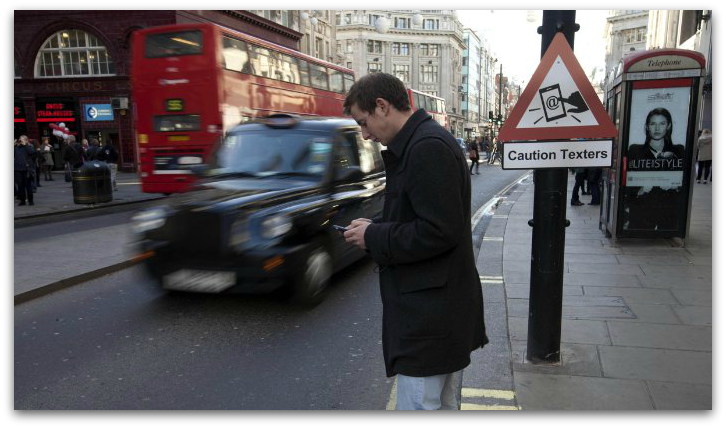 Smartphones are amazing little bundles of electrochemistry. From the sensors that pick up your touch and analyze your voice to the battery that is small and powerful enough to provide enough power to run applications on demand – the innovative science behind smartphones has changed the lives of people around the world.
Smartphones are amazing little bundles of electrochemistry. From the sensors that pick up your touch and analyze your voice to the battery that is small and powerful enough to provide enough power to run applications on demand – the innovative science behind smartphones has changed the lives of people around the world.
But sometimes those changes are not completely positive. With increased dependence on smartphones, many people now roam the sidewalk with their nose buried in their phones. According to The Wall Street Journal, the number of distracted pedestrians using cellphones is up 124 percent from 2010. Some researchers are even blaming portable electronic gadgets for 10 percent of pedestrian injuries and a half-dozen deaths each year.
In Germany, these distracted pedestrians have been deemed “sombies,” or “smartphone zombies.” And the German government isn’t just looking to throw out a new buzzword, they’re also seeking to solve this issue.
According to reports from The Local, the city of Augsburg recently installed rows of LED lights into the sidewalk that can sense when distracted pedestrians are approaching and give off a bright flash of red to warn them to not mindlessly wander into the street.
“We realized that the normal traffic light isn’t in the line of sight of many pedestrians these days,” said Tobias Harms of the Augsburg city administration in an interview with The Augsburger Allgemeine. “So we decided to have an additional set of lights – the more we have, the more people are likely to notice them.”







